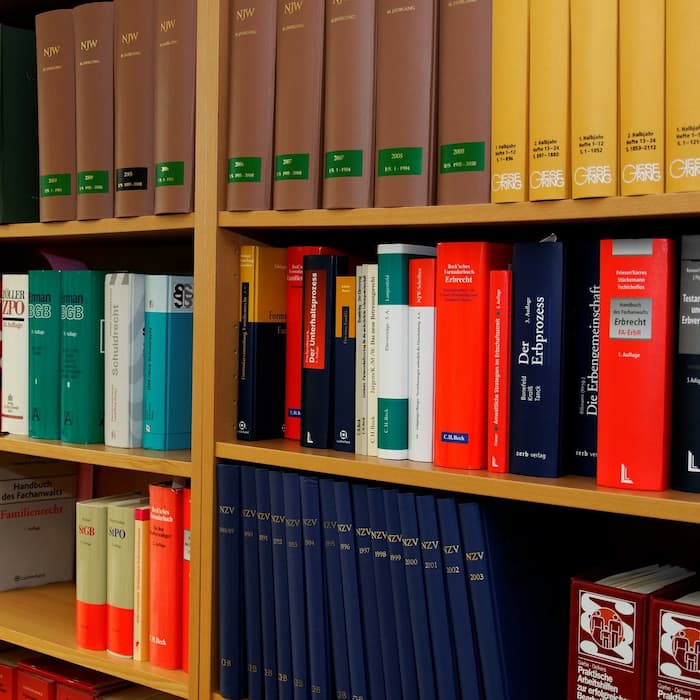Legal
Using Arbitration To Resolve Trust Disputes

Trust litigation can at times reach the public eye. One way to resolve disputes away from the glare of publicity is to seek arbitration.
In this article about trust litigation and ways of resolving disputes, the author examines how arbitration is used. The author is Tom McPhail (pictured below), senior associate, contentious trusts and estates, Farrer & Co. The editorial disclaimers apply to views of outside contributors. We value these ideas from experts across the sector, so please take these articles as a call to start and continue conversations. Get involved: email tom.burroughes@wealthbriefing.com and amanda.cheesley@clearviewpublishing.com

Tom McPhail
For settlors who want to ensure that "internal" trust
litigation – that is to say litigation involving settlors,
trustees, beneficiaries or others with an interest in the trust
property as opposed to third parties – can be resolved
effectively and in confidence, arbitration is a potentially
attractive option. Proponents of trust arbitration highlight
various advantages, including:
Confidentiality
In recent times, major trust litigation (such as Grand View v
Wong) has often found itself in the public eye. Arbitration
represents a means of resolving a trust dispute in a confidential
setting.
Choice of forum
An arbitration agreement allows parties to choose the
jurisdiction in which the dispute can be resolved, which may be
different from the jurisdiction of the governing law of the
trust.
Choice of representation
Parties are free to choose their legal representatives, avoiding
restrictive rights of audience rules in various offshore
jurisdictions.
Speed and finality
Arbitration can offer a streamlined form of dispute resolution,
giving the parties the ability to opt out of certain procedural
steps, although the Volpi litigation in the Bahamas shows that
this is far from guaranteed. The arbitral award itself is
intended to be final and binding, with fewer available grounds
for appeal.
Despite these potential benefits, trust arbitration has faced
obstacles which have proven difficult to overcome. In England
these include, for example:
Limits on relief available
Certain forms of relief cannot presently be granted by an
arbitral tribunal, meaning a trip to Court may be required after
a dispute has been arbitrated. These limits on relief mean that
some of the wider and more frequent requests to the court by
trustees, like (non-contentious) Public Trustee v Cooper
blessings of momentous decisions, variations and rectifications
can only ever be resolved in court under current rules.
Binding non-parties
Non-parties such as minor or unborn beneficiaries cannot be bound
by an arbitration agreement or an arbitration clause in a trust
instrument, potentially undermining the finality of an arbitral
award and raising the possibility of parallel court proceedings.
Public policy concerns
It has been argued that upholding an agreement to arbitrate in
all cases would oust the Court’s supervisory jurisdiction over
trusts.
These obstacles have historically hindered the uptake of
arbitration as a means of resolving trust disputes. Arbitration
of commercial disputes has, however, been on the rise for some
time and there has also been a growing interest in arbitration as
a means of resolving disputes which would otherwise play out in
the family courts, particularly since the permanent introduction
of open reporting provisions following the completion of the
Family Court Reporting Pilot.
Growing interest?
The time is therefore ripe for a reappraisal of the use of
arbitration in the trusts context and the decision last year of
the English High Court in Grosskopf v Grosskopf ([2024]
EWHC 291 (Ch)) may encourage practitioners to look again at trust
arbitration.
Grosskopf involved a dispute between a claimant beneficiary and
defendant trustees over the administration of a family trust. The
parties entered into an arbitration agreement for the dispute to
be determined by the Beth Din of the Federation of Synagogues,
but the claimant became dissatisfied with the arbitral
proceedings and issued a claim in the High Court for removal of
the defendants. The defendants applied to stay the claim pursuant
to s.9 Arbitration Act 1996.
Despite the claimant’s arguments raising all the issues
identified above, the court found that the arbitration agreement
between the parties was operative and the claimant was not
entitled to relitigate the issues before the High Court. In
particular, the court found that even though the specific relief
sought (the appointment of a judicial trustee) could not be
granted by the tribunal, the tribunal could still determine the
substance of the dispute and grant similar relief. The fact that
non-parties to the arbitration agreement might not be bound did
not prevent the tribunal from reaching a decision. An agreement
to submit a dispute about the removal of a trustee to arbitration
was also not contrary to public policy.
The decision in Grosskopf reflects the recent
‘pro-arbitration’ attitude of the English High Court. While
England is yet to follow certain offshore jurisdictions in
offering further legislative support for arbitration (examples
offshore include ss.91A and 91B of the Bahamas Trustee Act 1998
and s.63 of the Trusts (Guernsey) Law 2007), and while the
prevailing view remains that that an arbitration clause in an
English law trust deed is not capable of binding beneficiaries,
Grosskopf suggests that the English courts are
increasingly willing to recognise the arbitrability of internal
trust disputes.
With anecdotal evidence suggesting that the use of
arbitration clauses in trust instruments is on the rise, this is
an area which is likely to see further interest and development
in the coming years.